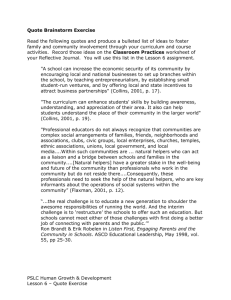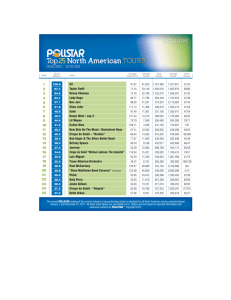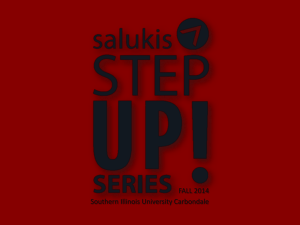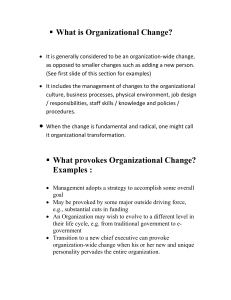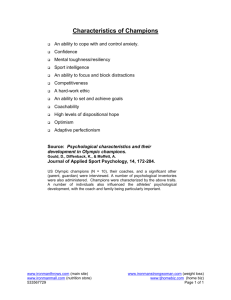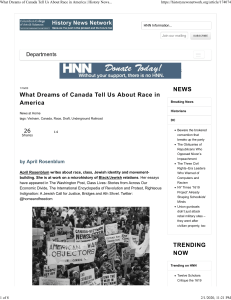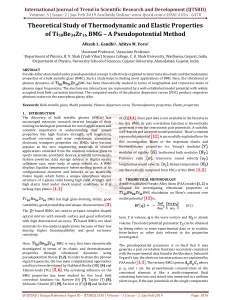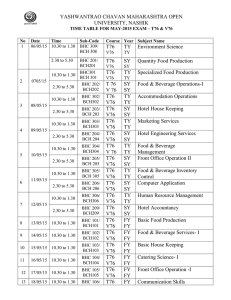CCT 355: E-Business Technologies - cct355-f12
advertisement
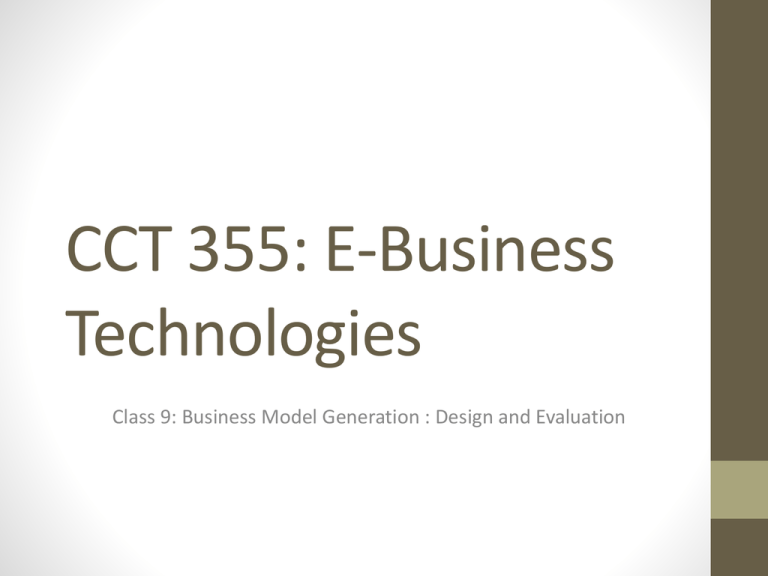
CCT 355: E-Business Technologies Class 9: Business Model Generation : Design and Evaluation Final Project • Identify a real organization that you have real contact with • Identify business information systems needs (as defined in this course – do *not* only suggest simple e-commerce solutions, web design/marketing solutions, etc. - the former no one hires consultants for, the latter is interesting, but not this course.) • Think people, process, context as well as technology People • Who are the main stakeholders in this organization? What are their skills/interests? Are they likely to be champions of change? Resisters? Helpers? Bystanders? • Who are major customers/clients of organization? Allied partners? Main competitors? • Are they likely to be champions of change? Helpers? Resisters? Bystanders? Process • What does this organization do? • What might it like to do with more resources/time/technology support, etc.? • What can it do better? (e.g., are there processes that can be made more efficient through information systems change?) • What should it probably *not* do? Context • What are larger contextual, regulatory, macroeconomic, strategic, etc. factors influencing this organization at present? • Are there changes in these factors that might post medium- to long-term challenges or opportunities? Then think technology! • What information systems improvements can you identify (based on what you’ve learned about the organization!) • What resource implications are involved in implementing these solutions? • Feel free to offer a range of options – sometimes there are cheap to expensive options, less to more powerful, etc. • Feel free to critique and note limitations of your options • Make sure proposed solutions a) meet the organization’s profile and needs and b) are feasible given organizational financial, human, time resource constraints • Implementation not required – but should be implementable. Use either BMG or Change Management Simulation! • Which one? Depends on context • Small organization where most people are on board for change – no need to analyze through change management simulation material • BMG can apply to most situations Questions? Business model as narrative • Often key bit in new/evolving product/service: what’s the story? • Who is the audience? • How do I effectively relay story to audience? • “Elevator pitch” as example • Importance of scenarios and visual layout/thinking in process – even (especially?) if it’s sketchy 5 Phases • • • • • • Mobilize Understand Design Implement Manage Your project = mostly the first three – the details are important, but come later Empathy Map • • • • • • • What does customer see? What does customer hear? What do they really feel? What do they do? What is source of customer pain? What is source of customer gain? Addressing or ameliorating these core needs can be very effective • May also include thinking about what customer does not yet know they want Designing models to meet changes in environment • Resource driven changes – human or physical resource limitations • Offer driven changes – price point constraints • Customer driven changes – shifting customer demographic or interests • Finance driven changes – ability to secure and utilize capital • Multiple changes SWOT Strengths Opportunities Internal to org. and helpful External to org. and helpful Weaknesses Threats Internal to org. and harmful External to org. and harmful Blue Ocean Evaluation • • • • • • For consideration of broader strategic change What does change eliminate? What does change reduce? What does change raise? What new opportunities are created? Cirque du Soleil example (and a few disagreements.)

